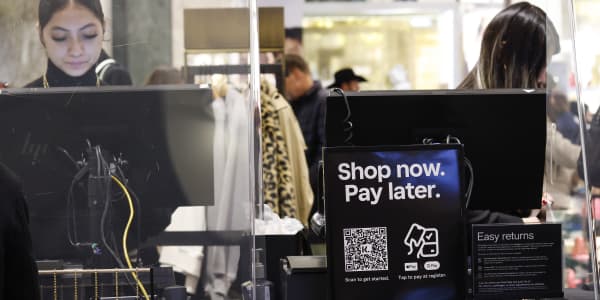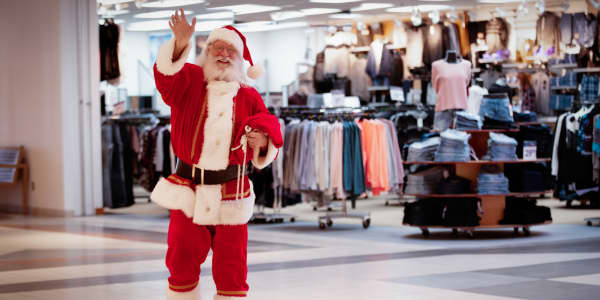
If you're seeing fewer holiday cards in your mailbox this year, you're not alone.
The tradition of sending paper greetings in a stamped envelope is being replaced by other ways of connecting in many households, often with an electronic card or a photo sent.
The experience of opening a holiday card sent to your mailbox is very different from an electronic message waiting in your inbox. But could physical cards actually make a comeback?
"This time of year there's a lot of photo cards out there," Hallmark's chief marketing officer, Lindsey Roy acknowledged in an interview with CNBC's "On the Money."
Roy said this early Christmas and Hanukkah, card sales are showing an upward trend. "It's a timeless category and one of the things we're seeing is our holiday sales are up this year."
Around 1.5 billion seasonal holiday cards were sent last year, according to the Greeting Card Association, while Americans buy 6.5 billion total greeting cards annually.
"You know the core of our business is really the individual greeting cards, the ones you pick out specifically for somebody else," Roy told CNBC. "It really is still a thriving and stable business."
According to IBISWorld, Hallmark still has a 51.2 percent share of the greeting card market. Second place is American Greetings with 23.4 percent.
Contrary to popular belief — and the growing popularity of e-cards, Roy told CNBC the perception that paper cards are vanishing is incorrect.
"A lot of people I think assume greeting cards are like books or CDs [compact disks], or some of those kinds of categories, but it's one of those categories that actually have perennial benefits over time," she said.
And she said sales are growing among millennials who are looking for something different and more lasting.
"Obviously, they're texting and using social media and so the card for them has a different benefit, it really kind of breaks through the clutter," Roy told CNBC. Millenials "love paper and the tactile experiences."
Beyond holiday cards, the most popular card occasions are Valentine's Day (145 million), Mother's Day (133 million) and Father's Day (90 million).
While the average card costs between $2 and $4, Roy said Hallmark "cards range from 99 cents to $9.99."
So what are buyers looking for at that wide price range? Roy stated that "it just really depends. We see that a lot of our card shoppers buy across prices and across different parts of our portfolio and a lot of it depends on what they're buying for, what the occasion is, who they're buying for."
She explained that multiple birthday parties for 4 year olds might be cheaper, but "that's maybe something a little different than your daughter's special 15th birthday. So it just depends, and we're committed to having options for everybody."
Where will cards be sold in the future? Roy says Hallmark now sells cards, box sets, wrapping paper and even single cards, on Amazon. Yet among card retailers are the 2,000 Hallmark Crown Gold stores, both company-owned and individually-operated.
"Like all stores, retail is being disrupted. So we're having to change with the times as well," Roy explained to CNBC.
"Our stores are continually challenging ourselves and our store associates say, 'How do you make the experience something unique and different? So I think the answer will be all of the above," Roy said. "But like every company, we're adapting with the times."
On the Money airs on CNBC Saturday at 5:30 am ET, or check listings for air times in local markets.





